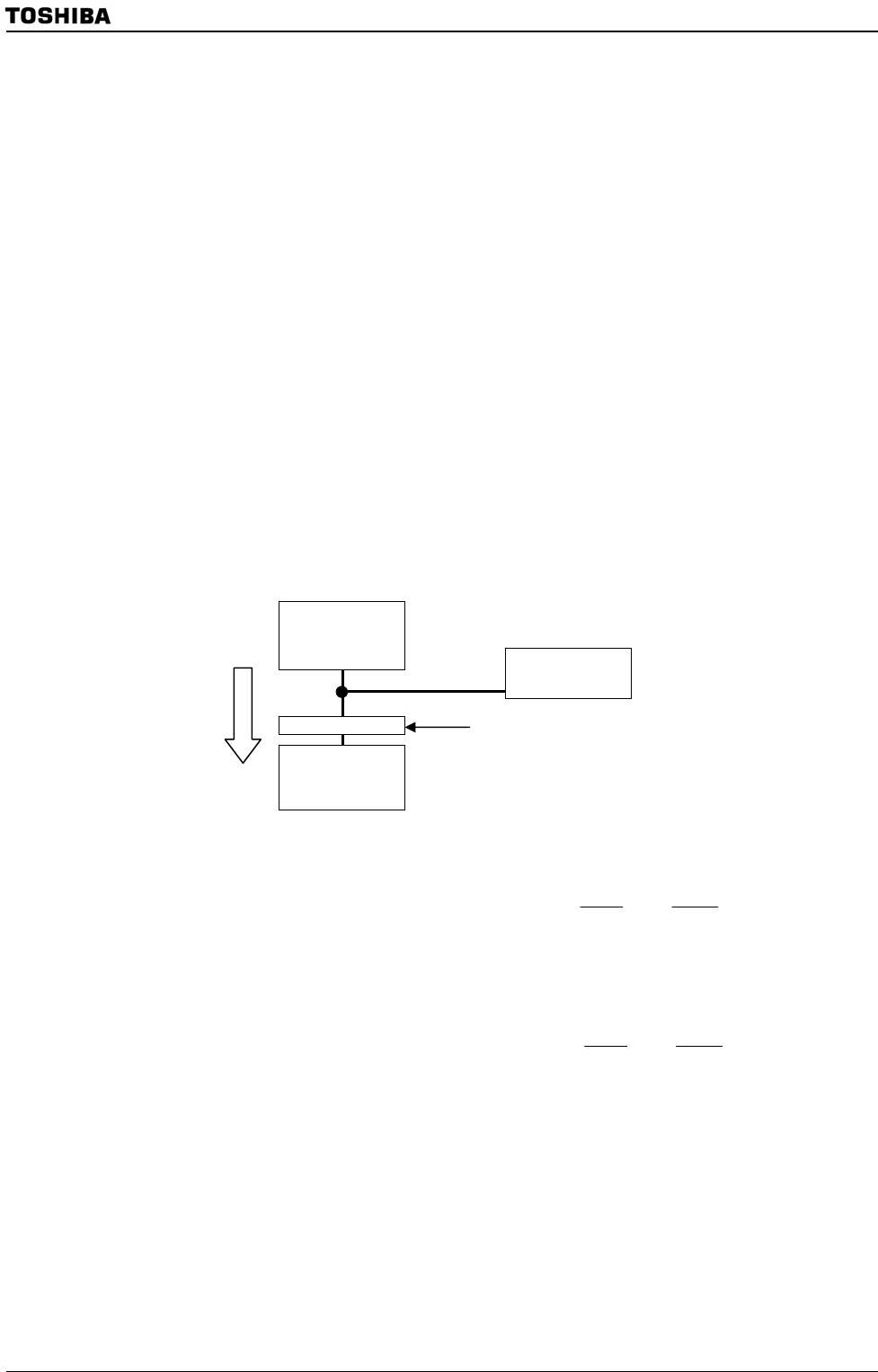
TMP92CZ26A
92CZ26A-248
(i) <RSECCL>
The <RSECCL> bit is used only for Reed-Solomon codes. When using Hamming codes,
this bit should be set to “0”.
The Reed-Solomon processing unit is comprised of two elements: an ECC generator and
an ECC calculator. The latter is used to calculate the error address and error bit position.
The error address and error bit position are calculated using an intermediate code
generated from the ECC for written data and the ECC for read data. At this time, no special
care is needed if ECC generation and error calculation are performed serially. If these
operations need to be performed parallely, the intermediate code used for error calculation
must be latched while the calculation is being performed. The <RSECCL> bit is provided to
enable this latch operation.
When <RSECCL> is set to “1”, the intermediate code is latched so that the ECC
generator can generate the ECC for another page without problem while the ECC
calculator is calculating the error address and error bit position. At this time, the ECC
generator can perform both encode (write) and decode (read) operations.
When <RSECCL> is set to “0”, the latch is released and the contents of the ECC
calculator are updated as the data in the ECC generator is updated.
(j) <SPHW1:0>
The <SPHW1:0> bits are used for both Hamming and Reed-Solomon codes.
These bits are used to specify the High width of the
NDRE
and
NDWE
signals. The High
width to be inserted is obtained by multiplying the value set in these bits by f
SYS.
(k) <SPLW1:0>
The <SPLW1:0> bits are used for both Hamming and Reed-Solomon codes.
These bits are used to specify the Low width of the
NDRE
and
NDWE
signals. The Low
width to be inserted is obtained by multiplying the value set in these bits by f
SYS.
Reed-Solomon
ECC
Generator
Reed-Solomon
ECC
Calculator
F/F 80bit
<RSECCL>=1 Latch_ON
<RSECCL>=0 Latch_OFF
NDECCRDn
Register
Flow of data


















